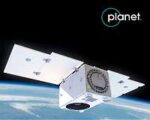In a major step toward deepening its defense industrial cooperation with South Korea and modernizing its ground mobility fleet, Poland has signed a $2.6 billion (11 billion PLN) agreement to procure and co-produce 1,266 Legwan 4×4 multi-role armored vehicles by 2035. The deal underscores Warsaw’s commitment to rapidly expanding its land forces while boosting local production capabilities through joint ventures with Korean defense firms.
Legwan Program Overview: A Strategic Mobility Investment
The Legwan is a new-generation light armored vehicle developed jointly by Poland’s Rosomak S.A., part of the Polish Armaments Group (PGZ), and South Korea’s Hyundai Rotem. Based heavily on the proven KIA KLTV (Kia Light Tactical Vehicle) platform used by the Republic of Korea Army since the mid-2010s, the Legwan will be tailored to meet Polish operational requirements across reconnaissance, command-and-control (C2), and logistics missions.
The contract covers delivery of:
- 1,000 baseline armored personnel carriers in various configurations
- 266 specialized variants (command post vehicles, medical evacuation units)
- Associated logistics packages and training systems
Initial deliveries are expected in late 2025 or early 2026. Full-rate production will run through 2035 with significant domestic content sourced from Polish industry.
Platform Lineage: From KIA KLTV to Legwan
The Legwan is derived from the KIA KLTV—a modular light utility vehicle introduced into service in South Korea in 2016. The KLTV family includes troop carriers, command variants, ambulances, and weapon carriers built on a common chassis powered by a Hyundai diesel engine (typically a Euro V-compliant turbocharged inline-4 producing ~225 hp).
Key features likely carried over into the Legwan include:
- Gross Vehicle Weight Rating (GVWR): ~5–7 tonnes depending on variant
- Crew capacity: typically driver + three passengers; some variants carry up to eight personnel
- Ballistic protection: STANAG Level I–II base armor; scalable with applique kits
- C4ISR integration options including BMS terminals and encrypted comms
- Optional remote weapon station (RWS) integration for self-defense roles
The Polish variant will reportedly incorporate modifications to meet NATO interoperability standards and accommodate domestic subsystems such as WB Group communications suites or PIT-RADWAR situational awareness sensors.
Industrial Cooperation & Local Production Strategy
A key dimension of the deal is industrial localization. Under the agreement:
- The first batch of vehicles will be assembled in South Korea using Korean components.
- Subsequent batches will transition to full assembly at Rosomak S.A.’s facility in Siemianowice Śląskie.
- A growing share of components—armor panels, electronics suites, suspension parts—will be sourced from Polish suppliers over time.
This model mirrors Poland’s approach with other Korean-origin systems such as the K9PL “Krab” howitzer (based on Hanwha’s K9 Thunder) and FA-50 light combat aircraft from KAI. PGZ officials have stated that up to 70% local content is targeted by mid-program milestones.
Tactical Roles & Operational Integration in Polish Forces
The Legwan fleet is intended to replace aging Honker light trucks and supplement heavier MRAP-class platforms like Cougar or Oshkosh M-ATV acquired under U.S.-led programs. It will serve across multiple branches including:
- Reconnaissance battalions: Fast-moving patrols with COTS sensor payloads for ISR missions.
- C2 nodes: Mobile command posts equipped with digital battle management systems compatible with NATO standards.
- EOD/engineering teams: Protected mobility for route clearance or sapper units operating near frontlines.
- Tactical logistics: Light cargo transport under armor protection in contested rear areas.
This aligns with Poland’s broader force restructuring under its Homeland Defense Act passed in March 2022—which aims to double troop strength above 300,000 personnel while investing heavily in mobile protected platforms across all echelons.
Korean Defense Exports Surge Amid Strategic Partnerships
This deal adds momentum to Seoul’s growing status as a top-tier arms exporter—especially in Eastern Europe where demand for rapid rearmament has surged post-2022 due to Russia’s invasion of Ukraine. Key recent sales include:
- K239 Chunmoo MLRS systems ordered by Poland alongside HIMARS launchers (~288 total planned)
- K9A1/K9PL self-propelled howitzers co-produced under Hanwha-PGZ agreements (~672 units total)
- K2 Black Panther tanks tailored as K2PL variant (~1,000+ planned over long-term)
The Legwan program further cements Hyundai Rotem’s footprint in Europe while offering Poland an off-the-shelf solution adaptable via domestic engineering inputs—a model increasingly favored over lengthy indigenous R&D cycles amid urgent capability gaps.
Challenges Ahead: Logistics Footprint & Survivability Concerns
Despite its advantages in cost-efficiency and modularity compared to heavier MRAPs or IFVs like Rosomak APCs or Borsuk IFVs currently entering service—the Legwan may face limitations if deployed into high-intensity combat zones without sufficient upgrades:
- Lack of mine/IED protection: The base KLTV design offers limited blast resistance unless retrofitted with V-hull kits or mine liners—raising survivability concerns against asymmetric threats.
- Sustainment complexity: As more vehicle types enter service—from Abrams MBTs down to FPV drones—logistical harmonization across platforms becomes critical for long-term readiness.
- Crew ergonomics & electronic integration: Adapting Korean designs for European anthropometric standards and integrating NATO-standard C4ISR may require iterative design cycles post field trials.
Ahead of full-rate production ramp-up after initial deliveries begin circa late-2025/early-2026, extensive testing under Polish Army operational conditions is expected—including cold-weather performance trials and live-fire evaluations at Ośrodek Szkolenia Poligonowego Wojsk Lądowych Żagań or Nowa Dęba ranges.
A Milestone Toward Interoperable Mass Mobility Forces
The $2.6 billion Legwan program reflects Warsaw’s strategic pivot toward scalable force mobility using interoperable platforms co-developed with trusted partners like South Korea. With delivery timelines stretching through the next decade—and plans for deeper localization—it also signals long-term investment not just into hardware but into sovereign industrial capacity aligned with NATO resilience goals.
If successfully executed alongside parallel programs like Borsuk IFV induction or HIMARS/Chunmoo MLRS integration—the Legwan could become a backbone platform enabling distributed operations doctrine across Poland’s Territorial Defense Forces (WOT), mechanized brigades, and expeditionary elements operating within NATO task forces east of Vistula River corridor.









